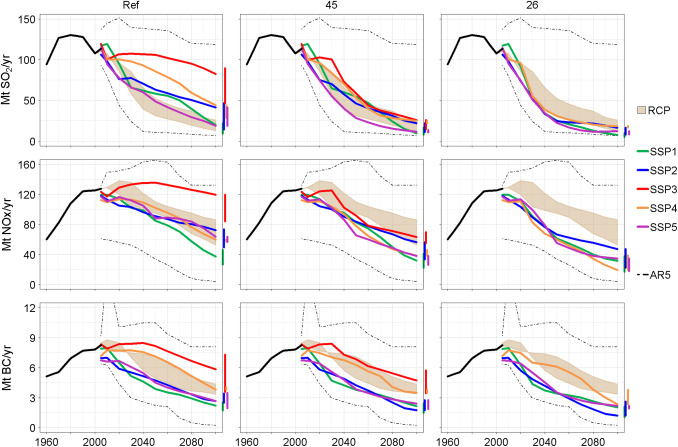Air pollution and health - MESSAGE-GLOBIOM
| Corresponding documentation | |
|---|---|
| Previous versions | |
| Model information | |
| Model link | |
| Institution | International Institute for Applied Systems Analysis (IIASA), Austria, http://data.ene.iiasa.ac.at. |
| Solution concept | General equilibrium (closed economy) |
| Solution method | Optimization |
| Anticipation | |
Assessing potential future air pollution emissions across the SSPs, it can be concluded that SSP1 and SSP5 show the most rapid emissions reductions than the other SSPs due to more effective pollution control and lower intensity for fossil fuels. SSP3 shows a consistent decline throughout the century, which is however less sharp than the reduction presented by SSP1 and SSP5. SSP3, due to larger projected population growth and relatively more slow and heterogeneous economic growth, results in an increase in emissions until 2030, and through a slight post-2030 decline end in only slightly lower emissions levels than the current ones by 2100.
Mitigation scenarios bring co-benefits in terms of air pollutant emission reductions. The largest emissions reductions can be seen for the SSP3 scenario, which has the highest baseline emissions, and the lowest for SSP1/SSP5. In terms of pollutants, SO2 and NOx emissions result in the largest reductions, whereas BC emissions do not decline as much - this can mainly be attributed to assumptions on fuel-substitution in the residential sector. (Rao et al, 2016MSG-GLB_rao_future_2016)
Figure x presents the differences of emissions reductions between the different SSPs for both a reference case as well as for mitigation scenarios.
<figure id="fig:MESSAGE-GLOBIOM_ther">

</figure>